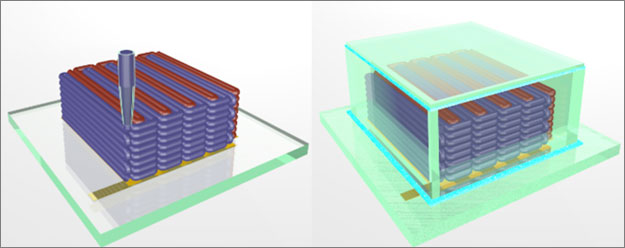
Photo from Hansjorg Wyss Institute for Biologically Inspired Engineering at Harvard University Harvard Shield
The reaction to first learning about 3D printing is usually one of intrigue and then pondering what the capabilities are for the technology. The simple answer to the functional use question is that 3D printing streamlines the process for prototyping a product. The futuristic idea is that the technology will make it possible to print anything right inside your house, without the need to ever go to the store. The reality, however, is that the technology has far wider implications beyond commercial use.
Jennifer Lawrence, Hansjörg Wyss Professor of Biologically Inspired Engineering at the Harvard School of Engineering and Applied Sciences, and her team of researchers from Harvard and the University of Illinois at Urbana-Champaign created a 3D printing process for making microbatteries that could be used in a wide spectrum of applications, including micro medical and communication devices. Continue reading
